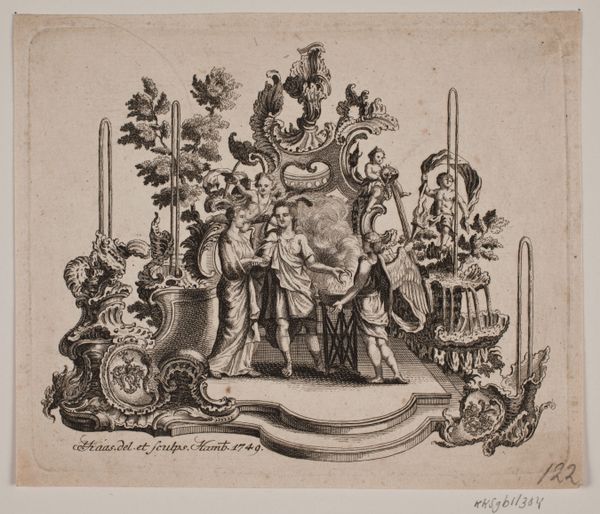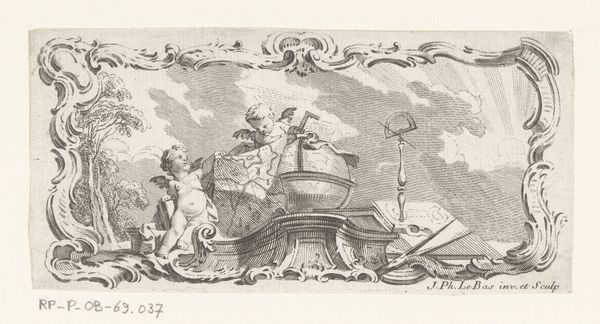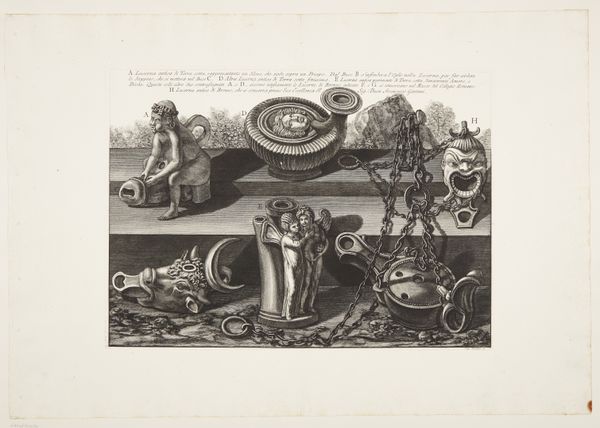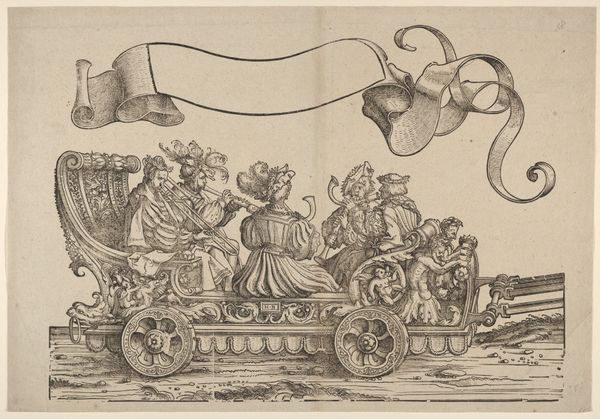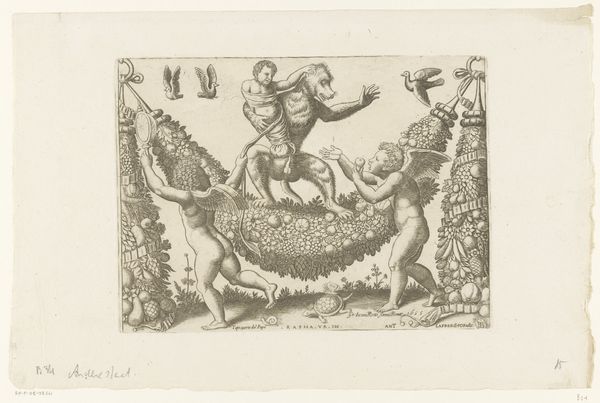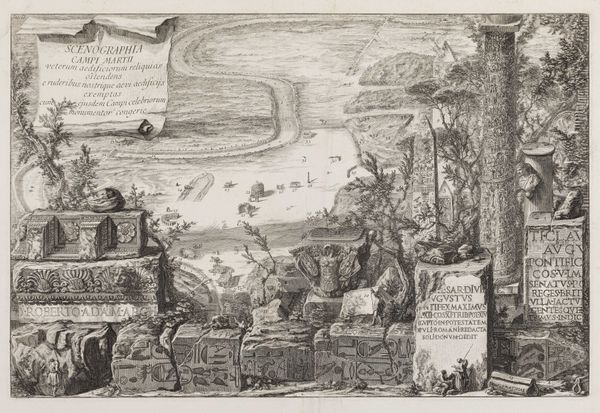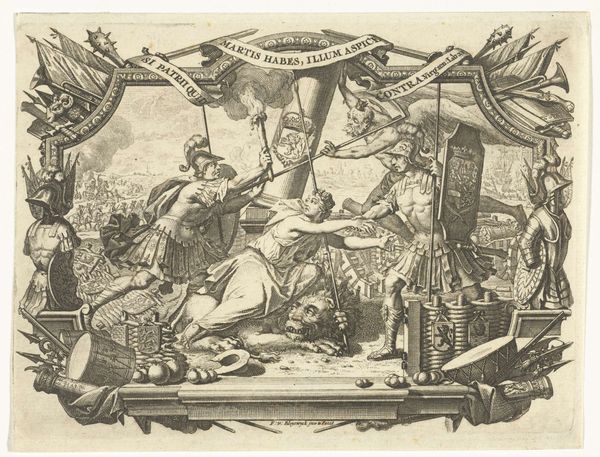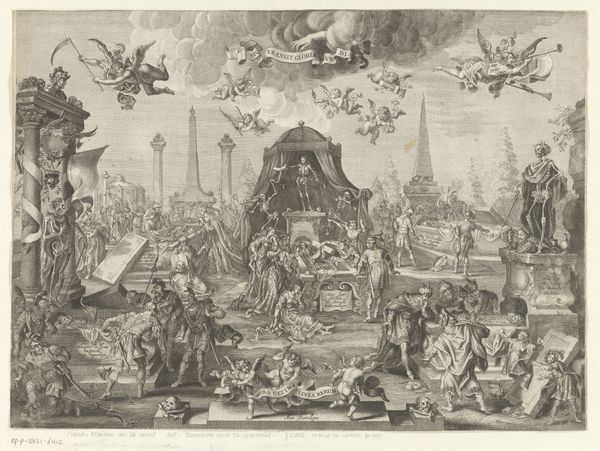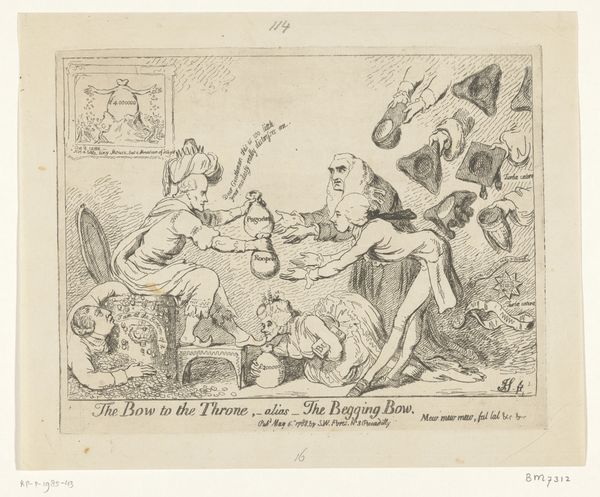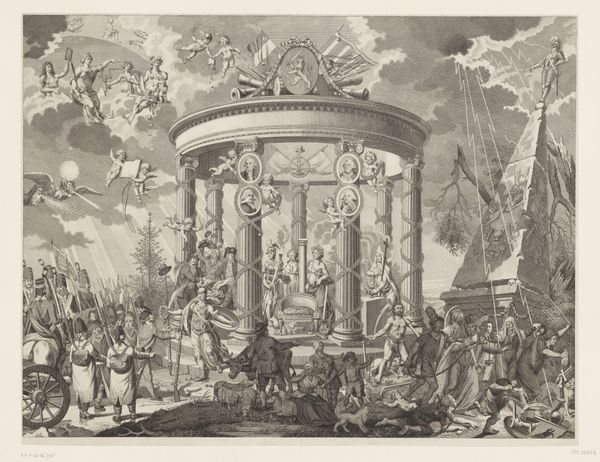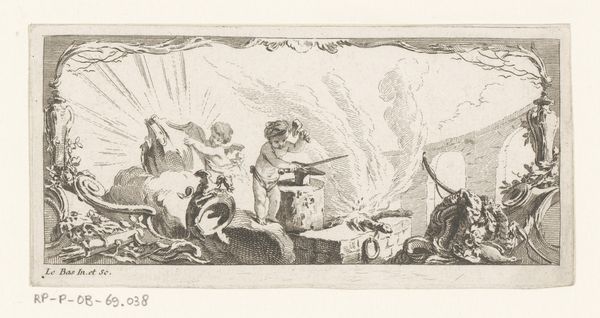
print, ink, engraving
#
neoclacissism
#
ink drawing
#
allegory
#
pen drawing
# print
#
classical-realism
#
ink
#
geometric
#
history-painting
#
engraving
Dimensions: sheet (trimmed to plate): 19.5 × 27.9 cm (7 11/16 × 11 in.)
Copyright: National Gallery of Art: CC0 1.0
Editor: This is Jean Jacques Lagrenée’s “Composition with Antiquities,” created in 1784 using ink. It’s incredibly detailed for an ink drawing, almost dreamlike in its composition. How do you interpret this work? Curator: Well, this piece, made right before the French Revolution, reveals the ambivalence towards the classical past during that time. The Neoclassical style sought order and virtue in antiquity. However, Lagrenée presents us with a chaotic assembly of fragmented objects. What do you make of the juxtaposition of these antique fragments? Editor: It’s strange, definitely not as clean as I’d expect. It's like he’s questioning the authority of these classical forms by presenting them in such a jumbled way. The symbolism is a little confusing. Curator: Exactly. Look closely. A female figure, seemingly Venus, adorns the urn. This elevation of idealized female forms can also be read critically through a feminist lens, since these 'virtuous' figures were typically placed on a pedestal as objects of male desire, obscuring their true agency and lived experiences. Consider, also, the social upheaval and calls for liberty bubbling beneath the surface during this period. How might this piece engage in the cultural narratives surrounding revolution and gender? Editor: I never thought about it that way, how the artist might be engaging with issues of representation and power. That actually gives me a lot to think about in terms of deconstructing historical narratives in art. Curator: It certainly points toward the necessity of unpacking dominant narratives and questioning the power dynamics at play in how history, and art, are constructed. Hopefully, it’s highlighted for you that art provides ways to expose the fault lines within the status quo. Editor: This has opened my eyes to seeing art as an active participant in historical discourse rather than just a reflection of it. Curator: Indeed! The power of art resides in its capacity to both mirror and challenge our understanding of the world.
Comments
No comments
Be the first to comment and join the conversation on the ultimate creative platform.
